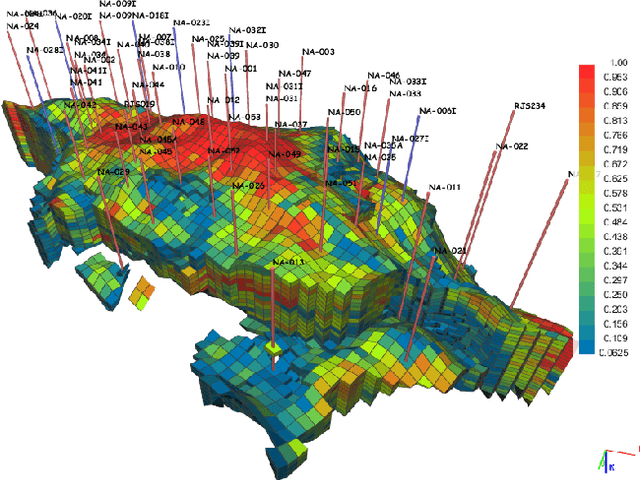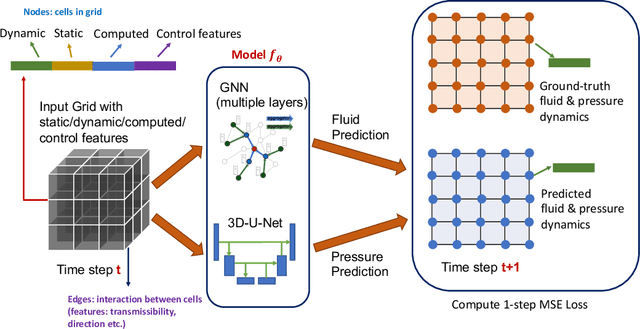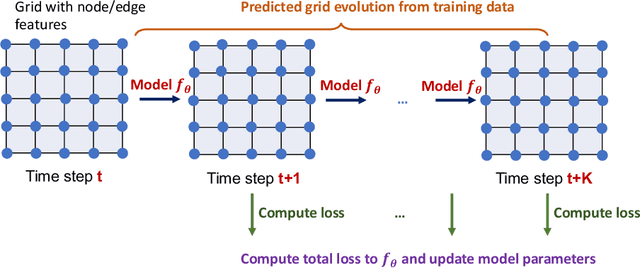Qinchen Wang
Learning Large-scale Subsurface Simulations with a Hybrid Graph Network Simulator
Jun 15, 2022



Abstract:Subsurface simulations use computational models to predict the flow of fluids (e.g., oil, water, gas) through porous media. These simulations are pivotal in industrial applications such as petroleum production, where fast and accurate models are needed for high-stake decision making, for example, for well placement optimization and field development planning. Classical finite difference numerical simulators require massive computational resources to model large-scale real-world reservoirs. Alternatively, streamline simulators and data-driven surrogate models are computationally more efficient by relying on approximate physics models, however they are insufficient to model complex reservoir dynamics at scale. Here we introduce Hybrid Graph Network Simulator (HGNS), which is a data-driven surrogate model for learning reservoir simulations of 3D subsurface fluid flows. To model complex reservoir dynamics at both local and global scale, HGNS consists of a subsurface graph neural network (SGNN) to model the evolution of fluid flows, and a 3D-U-Net to model the evolution of pressure. HGNS is able to scale to grids with millions of cells per time step, two orders of magnitude higher than previous surrogate models, and can accurately predict the fluid flow for tens of time steps (years into the future). Using an industry-standard subsurface flow dataset (SPE-10) with 1.1 million cells, we demonstrate that HGNS is able to reduce the inference time up to 18 times compared to standard subsurface simulators, and that it outperforms other learning-based models by reducing long-term prediction errors by up to 21%.
Real-Time Facial Expression Emoji Masking with Convolutional Neural Networks and Homography
Dec 24, 2020



Abstract:Neural network based algorithms has shown success in many applications. In image processing, Convolutional Neural Networks (CNN) can be trained to categorize facial expressions of images of human faces. In this work, we create a system that masks a student's face with a emoji of the respective emotion. Our system consists of three building blocks: face detection using Histogram of Gradients (HoG) and Support Vector Machine (SVM), facial expression categorization using CNN trained on FER2013 dataset, and finally masking the respective emoji back onto the student's face via homography estimation. (Demo: https://youtu.be/GCjtXw1y8Pw) Our results show that this pipeline is deploy-able in real-time, and is usable in educational settings.
 Add to Chrome
Add to Chrome Add to Firefox
Add to Firefox Add to Edge
Add to Edge